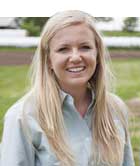
Fall pasture growth can provide an extra opportunity for grazing livestock. If not managed carefully, though, it can have detrimental long-term effects on your forage stand.
“A dry summer has stunted fall pasture regrowth dramatically, but as rains begin to increase in frequency in most regions, fall grazing is beginning to look a little more promising,” said Jessica Williamson, Penn State extension forage specialist.
However, the cooling temperatures can prevent essential forage growth needed for plants to store carbohydrates to survive the winter, causing a partial or total stand loss.
In the Penn State Extension newsletter, Field Crop News, Williamson notes that perennial forages in established pastures are developing new shoots and undergoing root regeneration in the fall.
During root regeneration, carbohydrates are stored for proper overwintering within the crown and roots, which is typically in the lower 3 to 4 inches of the plant in cool-season perennial pastures. Therefore, it is recommended to leave a higher stubble height, often 4 to 5 inches, in the fall so pastures can store the carbohydrates that will give them an advantage the following spring.
“Overgrazing during the fall inhibits regeneration of the root system and development of new shoots for the next season’s growth,” Williamson says. Rotational or strip grazing systems can help to control and monitor grazing height by reducing the area of allotted forage.
Applying nutrients such as lime, potassium, and phosphorus in the fall benefits root regeneration and regrowth. Once soil test results are obtained, if pH is below the ideal level, liming at the recommended rate will improve soil neutrality and help with forage growth and weed control.
When applying nitrogen, the plants’ response to application corresponds with the amount of moisture available, fertilizer application date, and rate of application. For cool-season mixed species pastures, apply no more than 40 pounds of nitrogen per acre in the fall. High application rates can cause winterkill.
“It is important to remember that response to fertilization is often determined by grazing management,” Williamson said.
If pastures are overgrazed to low stubble height, an inadequate root system will prevent the plant from prospering and growing. Higher stubble height allows pastures to survive the winter and thrive in the spring.

Sydney Sleep was the 2016 Hay & Forage Grower summer editorial intern and is a junior at South Dakota University.

